Pad See Ew – the popular Thai stir fried noodles straight from the streets of Thailand made at home! While Pad Thai is sweeter and nuttier, Pad See Ew is salty, balanced with a touch of sour and a wonderful chargrilled flavour which you can create at home!
This is a reader-favourite recipe included by popular demand in my debut cookbook “Dinner”!

Pad See Ew
Pad See Ew, which means “stir fried soy sauce noodles”, is an extremely popular Thai street food meal and one of the most popular noodles dishes at Thai restaurants here in Australia.
Making a great Pad See Ew at home simply comes down to two things:
The right sauce. Basic recipes online will instruct you to use little more than just soy sauce and sugar. It takes a little more than that!
Caramelising the noodles – Getting a little caramelisation on the noodles makes all the difference between an “ok” and “wow, it’s JUST like you get at restaurants!”.
The trick? Remove the stir fry ingredients. Cook the noodles with sauce separately. Less stuff in the wok (or skillet) = easier to caramelise the noodles. At least, at home. If you’ve got a giant restaurant wok burner, you don’t need to do the noodles separately!
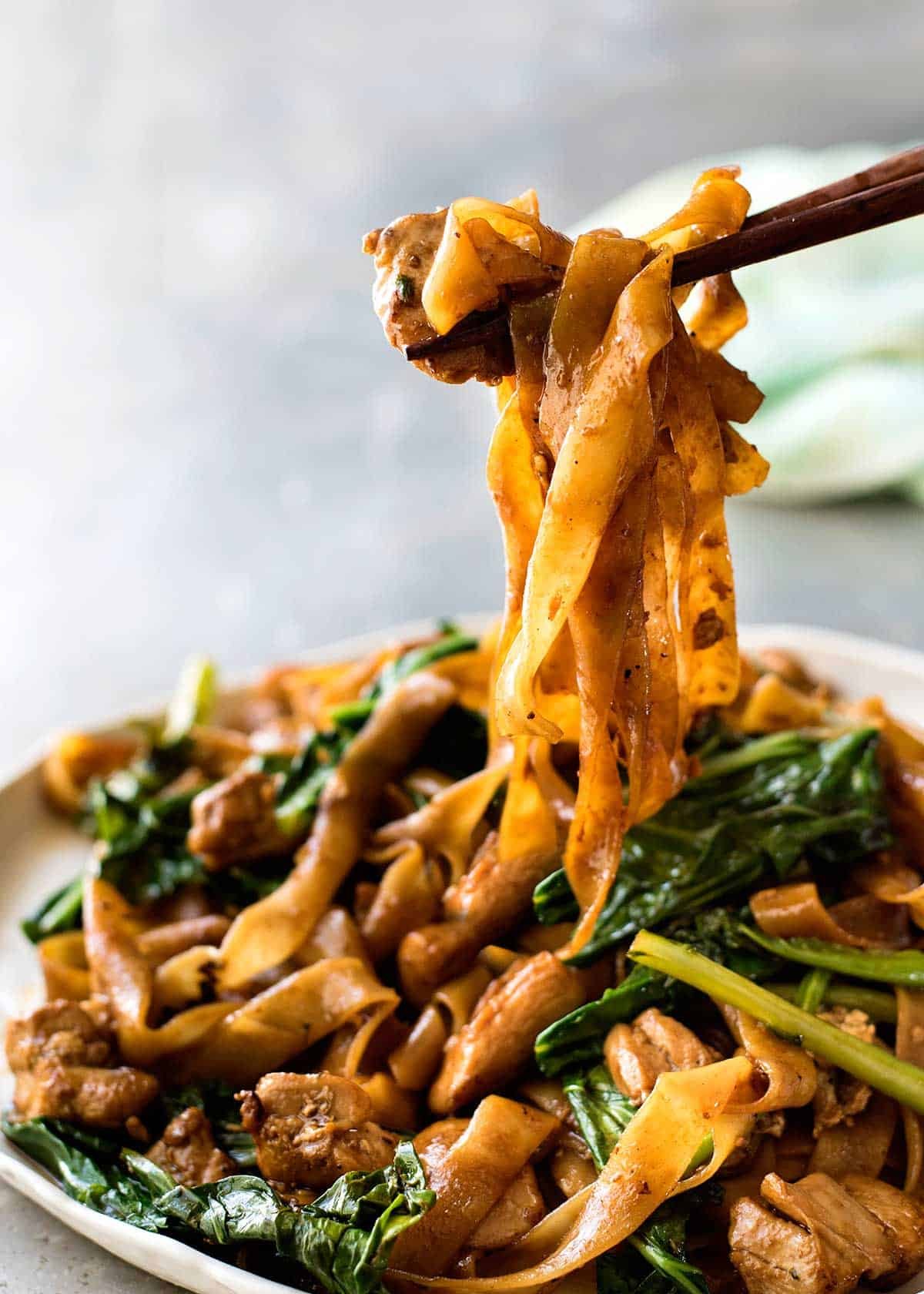
What goes in Pad See Ew
I can’t remember where I originally got the recipe from. Probably from David Thompson, the famous Australian chef who has dedicated his life to mastering the art of Thai cooking. I’ve made it so many times over the years, I can almost make it with my eyes closed. (Not really….but you know what I mean!)
So I had to actually measure the ingredients properly to share the recipe!
1. Pad See Ew Sauce ingredients
Pad See Ew has a sweet-savoury-touch-of-sour flavour, and this is made with a combination of the following ingredients:
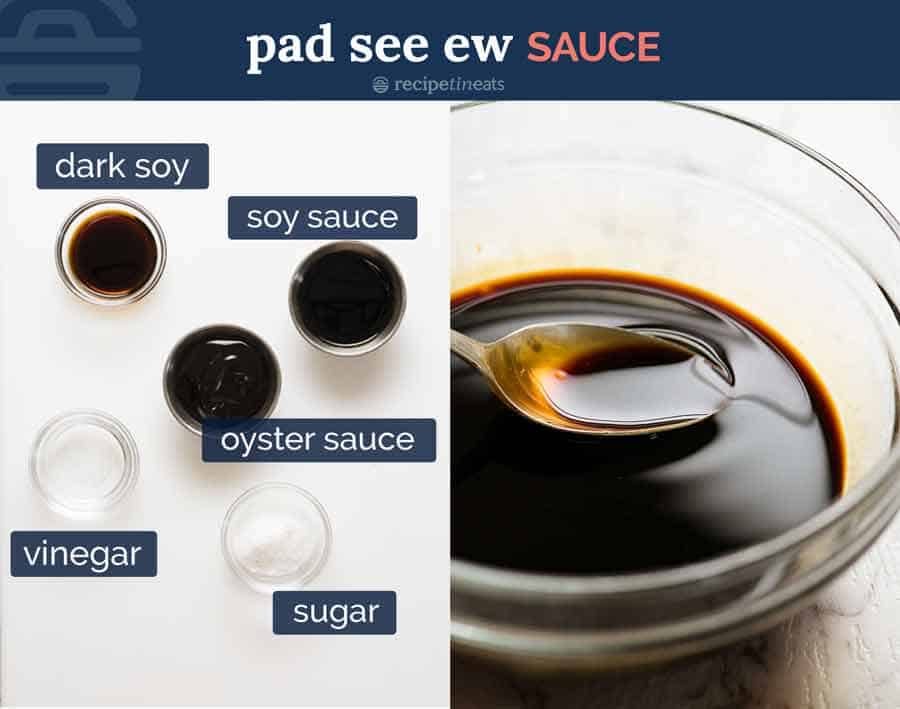
Dark soy sauce – For flavour and staining the noodles a dark brown.
Ordinary or light soy sauce – For seasoning (salt) and a bit of flavour. Most of the flavour comes from the oyster sauce and dark soy sauce. More on different soy sauces and when you can substitute with what in this About Soy Sauces post.
Oyster sauce – Key ingredient, it’s like 10 difference sauces mixed up in one bottle!
Vinegar – To balance the sweet and savoury. Some form of sour is a key ingredient in South East Asian cooking!
Sugar – For sweetness.
2. Pad See Ew ingredients
And here are the other ingredients for Pad See Ew:

Noodles – Pad See Ew is traditionally made with Sen Yai, which are wide, thin fresh rice noodles that are not easily accessible. Even most Asian stores in Sydney do not sell them – you usually need to go to a Thai grocery store.
So it is perfectly acceptable, and just as delicious, to make them with any wide flat rice noodles. I use dried rice noodles labelled as “Pad Thai” Rice Noodles (pictured below) because they are the widest available at the supermarket.
Once rehydrated, they’re essentially Sen Yai Noodles – just not quite as wide.
Chinese Broccoli / Gai Lan – This is a key authentic ingredient in Pad See Ew. Otherwise known as Gai Lan or Kai lan, it’s leafy and looks quite different to broccoli, but you’ll notice a similarity in the texture of the stems (hence the name).
If you can’t find it, just sub with other Asian greens, or a combination of broccoli or broccolini + spinach.
Chicken and egg – Feel free to use other proteins if you wish. But chicken is by far the most popular.
How to make Thai Stir Fried Noodles
Usually when making stir fried noodles, we toss everything together in one big pan or a wok.
But for Pad See Ew made at home, I do things differently to best replicate a restaurant flavour and minimise noodle breakage:
Cook chicken and vegetables first, then remove
Add noodles and sauce, toss to caramelise (just 15 seconds), then add chicken and vegetables back in.
Reason: A signature flavour in Pad See Ew is the caramelisation of the noodles. Restaurants and street vendors achieve this with super powered gas stoves with fiery heat that you’ll never find in a home kitchen. The only way to replicate that caramelisation on the noodles on a home kitchen stove is to declutter the wok and cook the noodles separately – the noodles will caramelise in 15 seconds.
The other reason is that rice noodles break if you toss them too much. Doing the two-stage toss makes it much easier and faster to disperse the sauce and bring the Pad See Ew together.
Trust me on this point. I’ve made a LOT of Pad See Ew at home in my time, and the two-stage toss it the easiest and most effective technique!

Garlic, chicken and Chinese broccoli STEMS first – Using either a wok or large skillet set over high heat, heat the oil then sauté the garlic until it goes light golden. Add the chicken then once it mostly changes from pink to white, add the Chinese broccoli stems which take longer to cook than the leafy part.
Once the chicken is cooked (it should only take 2 to 3 minutes), toss the Chinese broccoli leaves in and cook for 30 seconds or so just until wilted.
Push everything to the side to make room to scramble the eggs on the side. This is the traditional Thai way of scrambling eggs in Pad See Ew!
Crack egg straight into the wok.
Scramble egg – Then mix to scramble it. Speed is of the essence here – we want scrambled egg not a sunny side up egg!
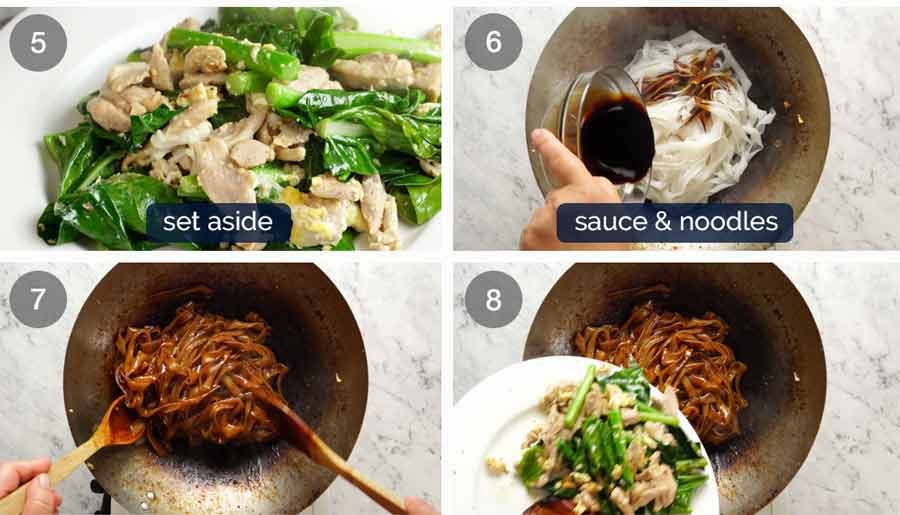
Empty wok – Remove the chicken and vegetables onto plate. As mentioned above, the best way to cook Pad See Ew at home is to cook the noodles separately so we can get some nice caramelisation on them. If we don’t do this, then the noodles just stew instead of caramelising.
Add noodles and sauce into the wok.
Toss quickly for 1 to 1 1/2 minutes until the sauce is dispersed throughout the noodles and you see some caramelisation on the edges.
PRO TIP: You want to be quick here because the longer and more you toss, the more noodle breakage you have. You’ll notice restaurants typically toss the noodles in the wok without using a wooden spoon or other tool for stirring – this too helps to minimise noodle breakage.
A note on Noodle Breakage – That said, you WILL get some noodle breakage, and that is normal / perfectly acceptable. Ever notice how the wide, flat noodles in Pad See Ew served at Thai restaurants are not long strands? That’s just the way it is. In fact, traditionally, Pad See Ew is served in Thailand with a FORK or spoon instead of noodles for ease of eating.
Add chicken and veg back in – Once the noodles are caramelised, add the chicken and vegetables back in. Give it a quick toss just to disperse, then serve!

As with all stir fries, once you start cooking, it moves very fast! So have everything prepared and ready to throw into the wok because there’s not time to be scrambling around the kitchen!
If you want to add a fresh side, try this Asian Slaw – it’s a great all rounder that goes with all Asian foods. – Nagi x
Watch how to make it
This recipe features in my debut cookbook Dinner. The book is mostly new recipes, but this is a reader favourite included by popular demand!
Hungry for more? Subscribe to my newsletter and follow along on Facebook, Pinterest and Instagram for all of the latest updates.
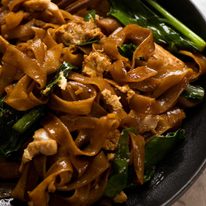
Pad See Ew – Thai Stir Fried Noodles
Ingredients
Noodles
- 200g / 7 oz dried wide rice stick noodles , or 15 oz / 450g fresh wide flat rice noodles (Sen Yai) (Note 1)
Sauce
- 2 tsp dark soy sauce (Note 2)
- 1 1/2 tbsp oyster sauce
- 1 tbsp light soy sauce (or all purpose, Note 3)
- 2 tsp white vinegar (plain white vinegar)
- 2 tsp sugar (any type)
Stir Fry
- 3 tbsp peanut or vegetable oil , separated
- 2 cloves garlic cloves, very finely chopped
- 1 cup / 150g / 5oz chicken thighs (boneless, skinless), sliced (Note 4)
- 1 large egg
- 4 stems Chinese broccoli (Note 5)
Instructions
Preparation:
- Chinese Broccoli – trim ends, cut into 7.5cm/3" pieces. Separate leaves from stems. Cut thick stems in half vertically so they're no wider than 0.8cm / 0.3" thick.
- Noodles – Prepare according to packet directions and drain. Time it so they’re cooked just before using – do not leave cooked rice noodles lying around, they break in the wok.
- Sauce – Mix ingredients until sugar dissolves.
Cooking:
- Heat oil: Heat 1 tbsp oil in a very large heavy based skillet or wok over high heat.
- Cook garlic and chicken: Add garlic, cook 15 seconds. Add chicken, cook until it mostly changes from pink to white.
- Chinese broccoli STEMS: Add Chinese broccoli stems, cook until chicken is almost cooked through.
- Chinese broccoli LEAVES: Add Chinese broccoli leaves, cook until just wilted.
- Scramble egg: Push everything to one side, crack egg in and scramble.
- REMOVE chicken from wok: Remove everything in the wok onto a plate (scrape wok clean).
- Caramelise noodles: Return wok to stove, heat 2 tbsp oil over high heat until it starts smoking (HOT is key!). Add noodles and Sauce. Toss as few times as possible to disperse Sauce and make edges of noodles caramelise – about 1 to 1 1/2 minutes.
- Add chicken back in: Quickly add chicken and veg back in, and toss to disperse. Serve immediately!
Recipe Notes:
Nutrition Information:
Originally published 2014, updated 2016. Updated over the course of the years with improved photos, the addition of ingredients and process photos as well as a recipe video. Recipe also updated with a more effective cooking method – cooking the ingredients in two batches. No change to ingredients, but yields a better caramelisation and easier to cook – read in post for explanation.
MORE THAI TAKEOUT FAVOURITES
Love noodles? Me too! See my entire Noodle recipes collection.
Life of Dozer
When Dozer ate a VERY spicy piece of chilli biltong!!

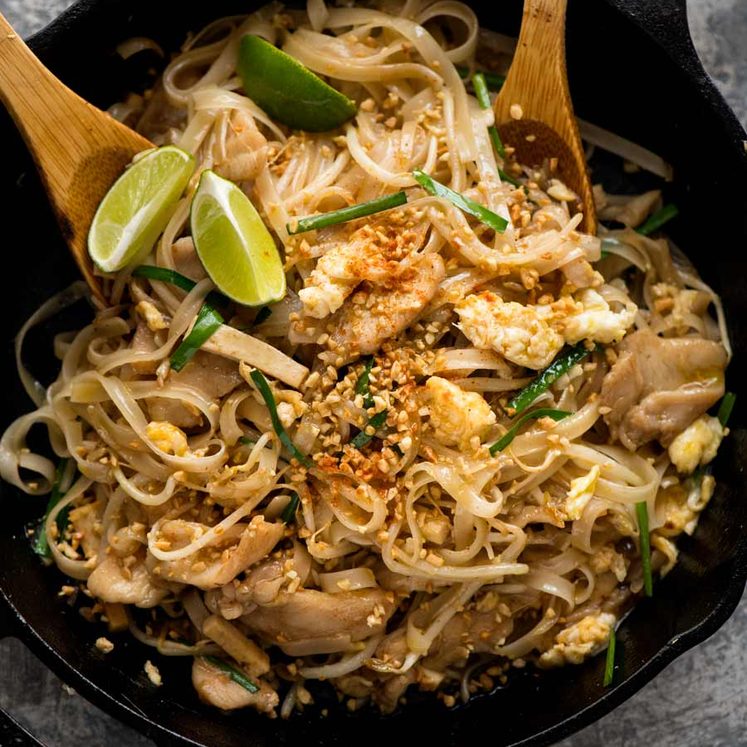
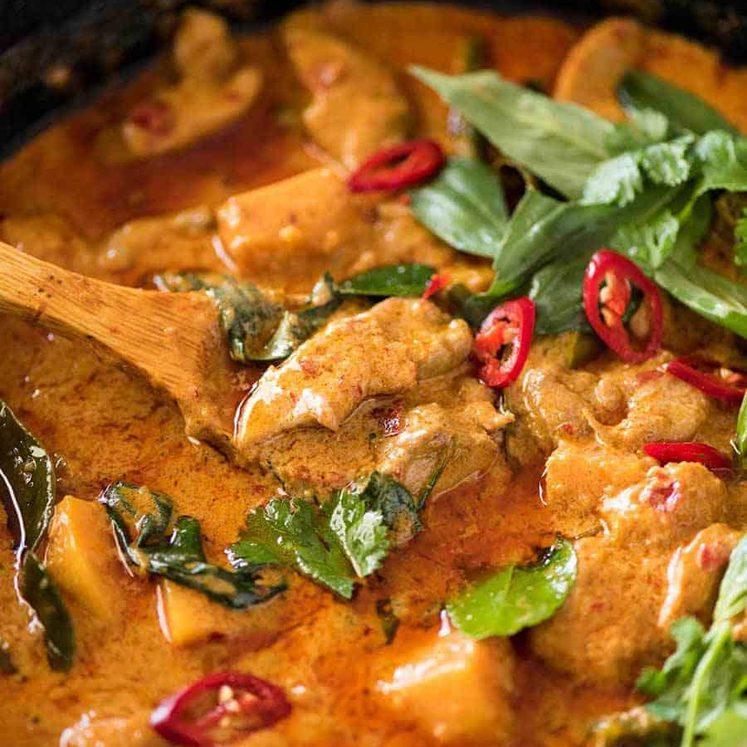
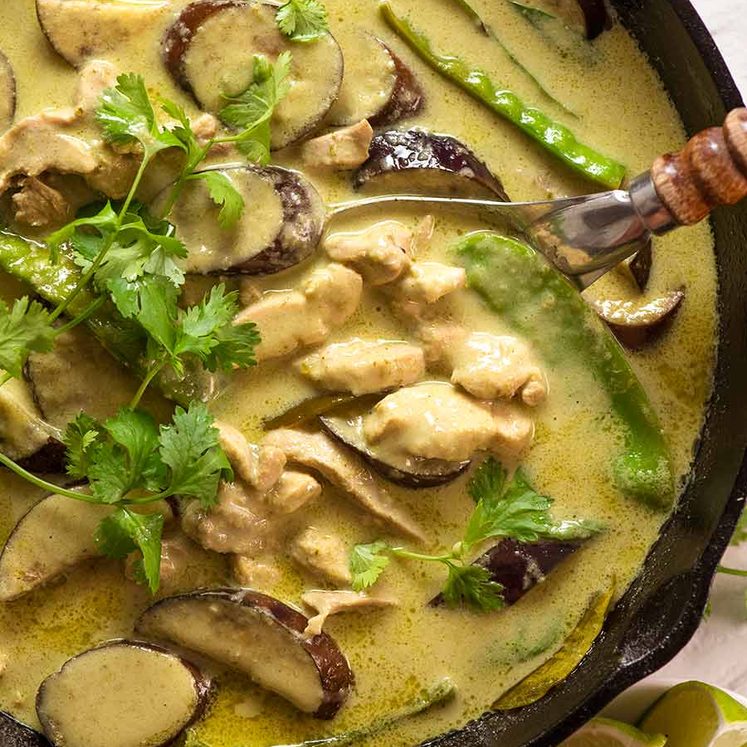

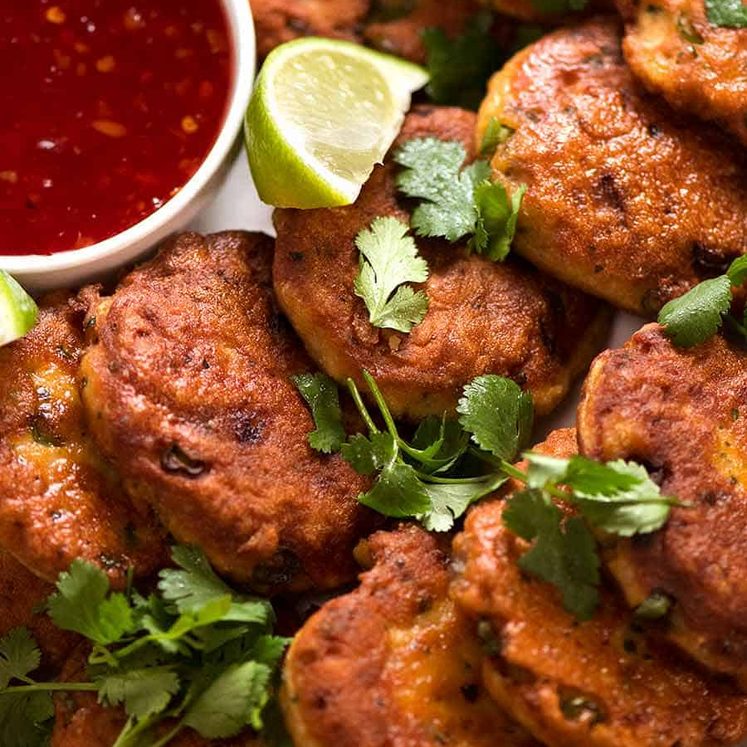
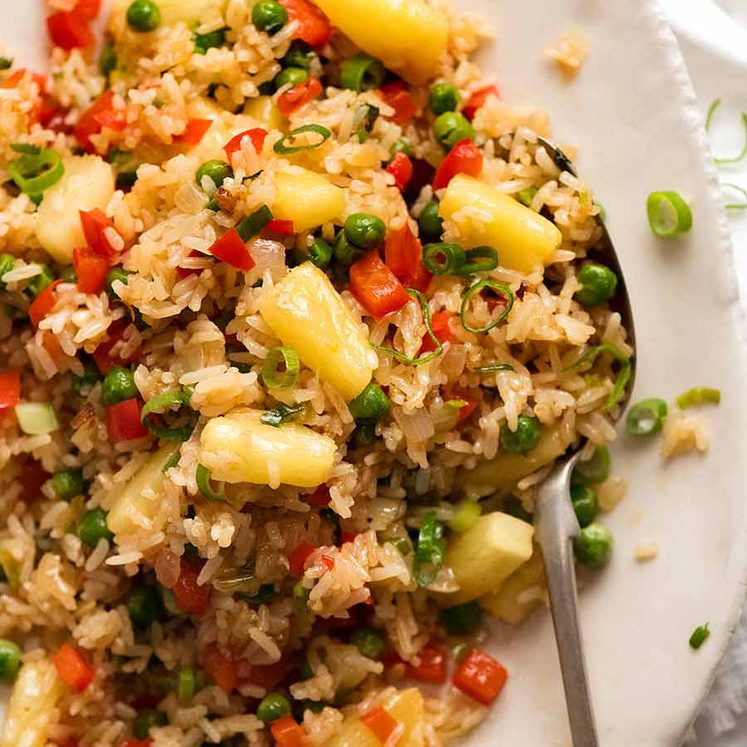
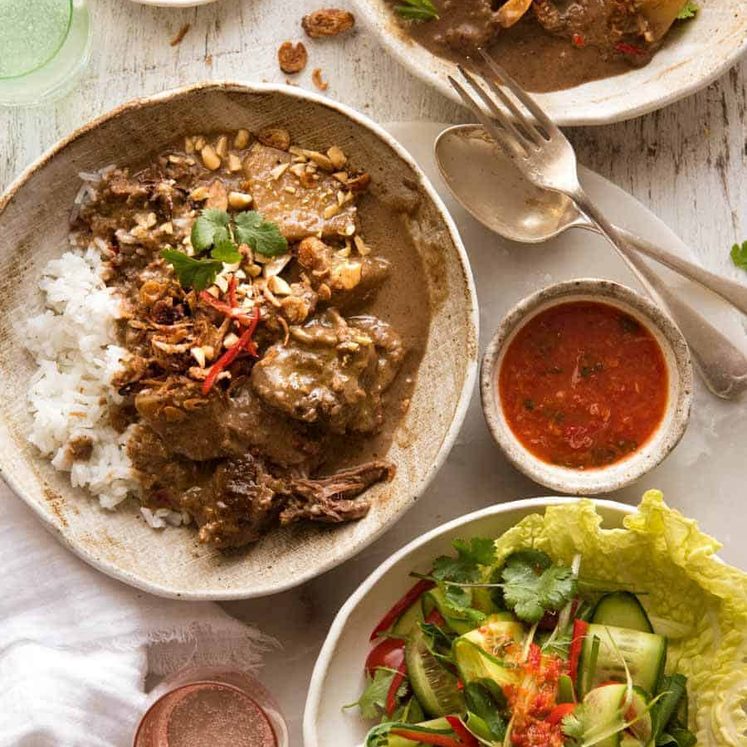

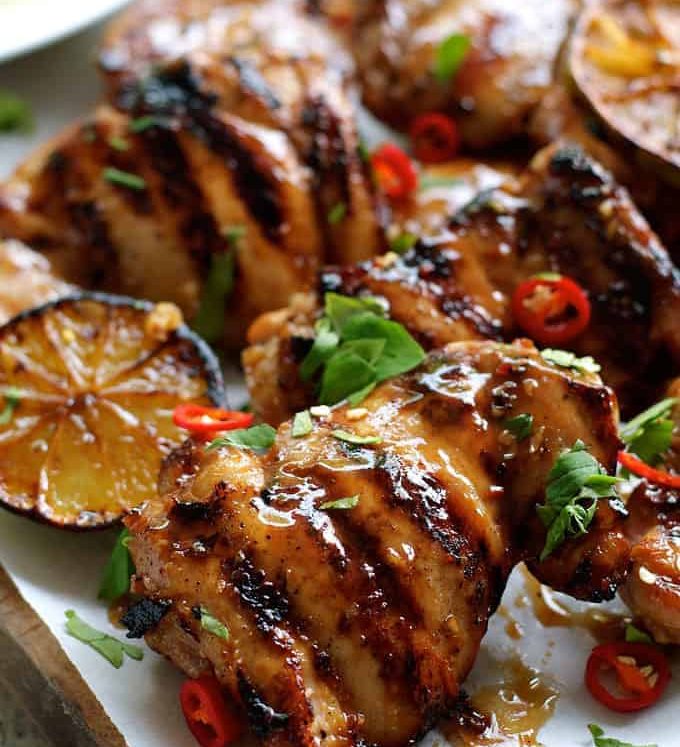
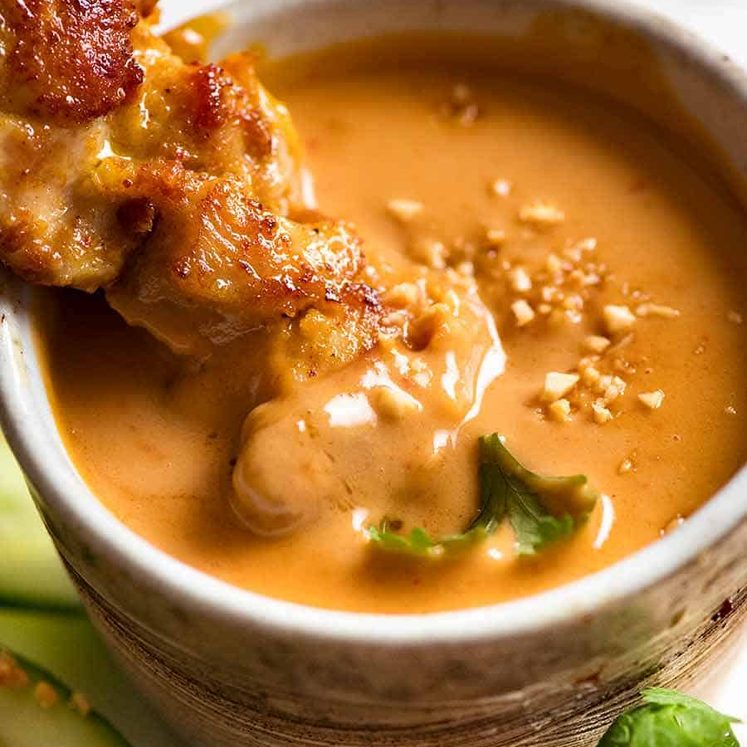
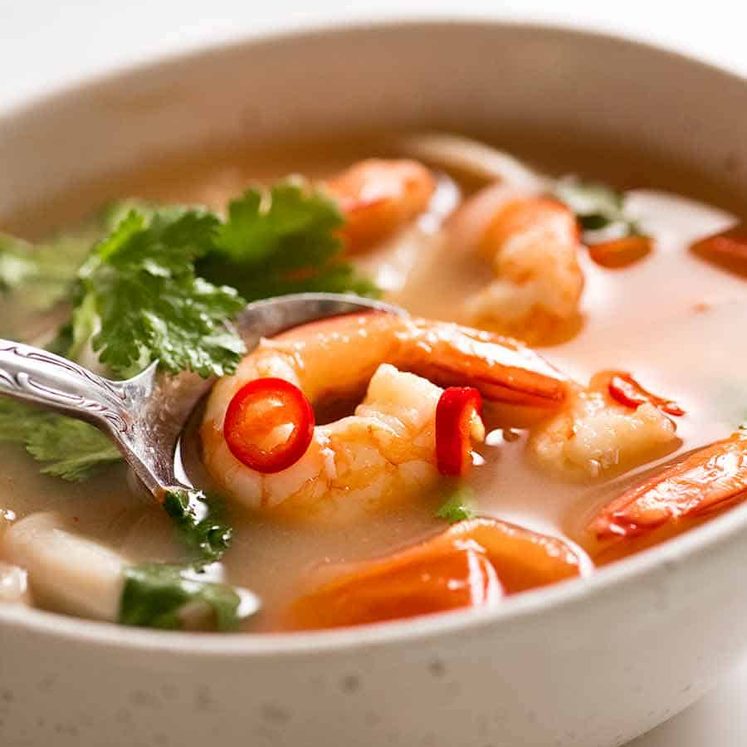
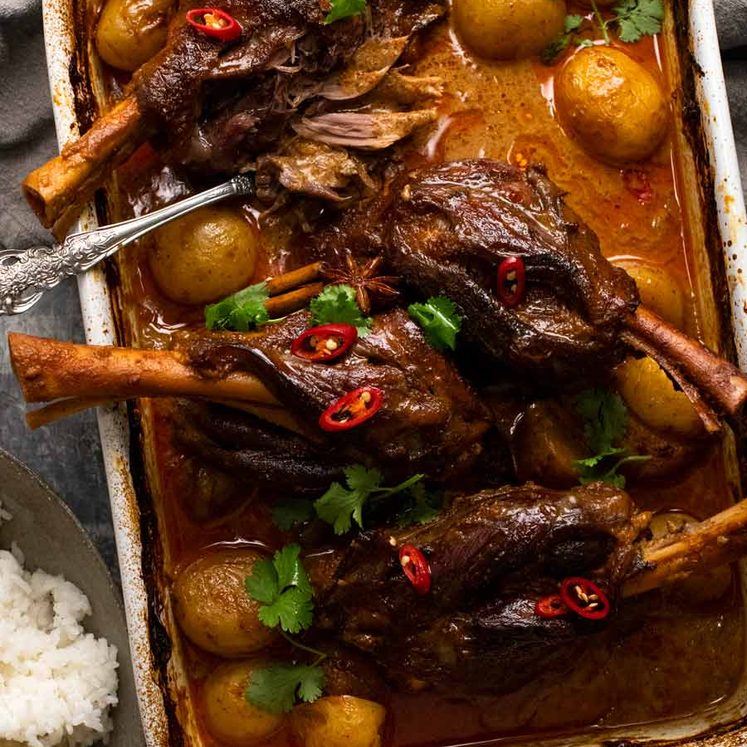
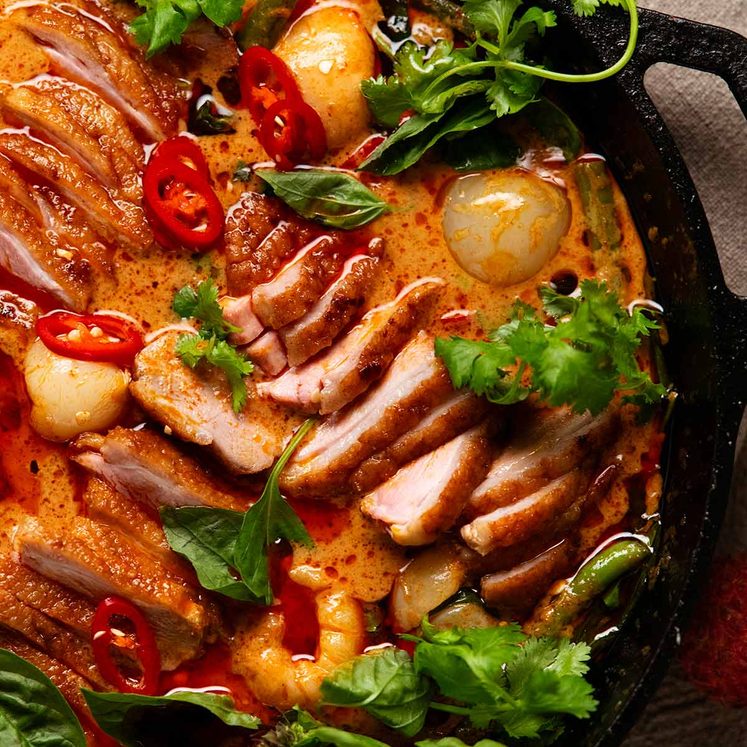
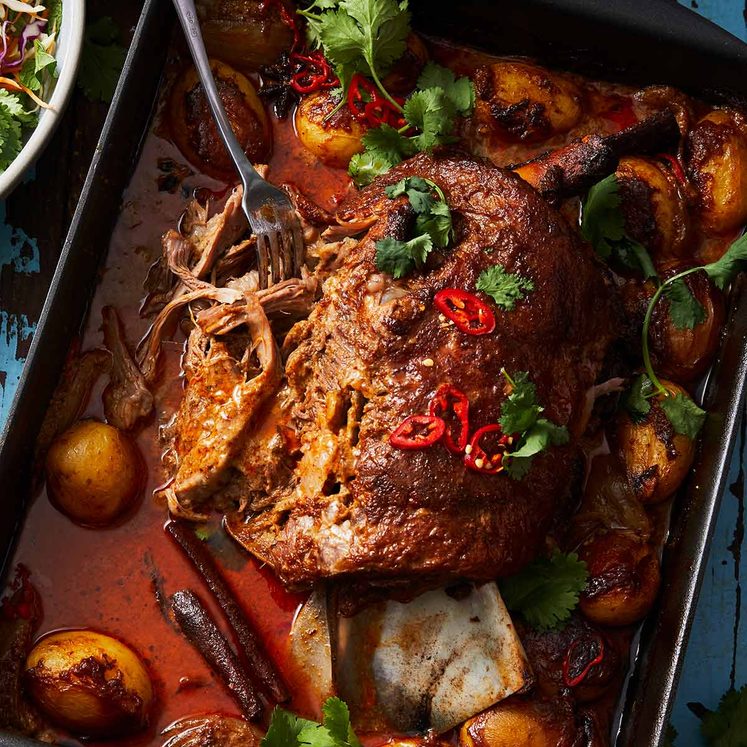
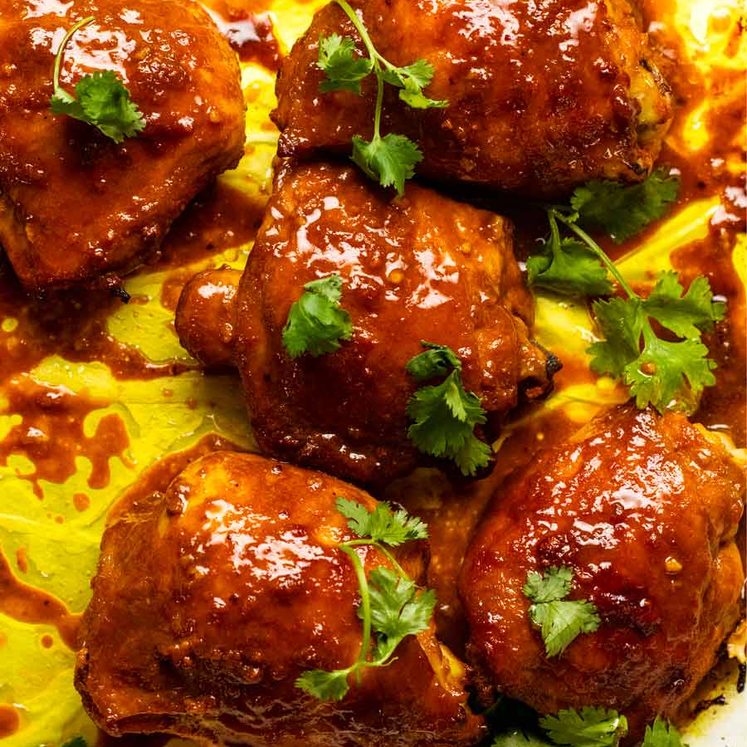
Hi Nagi,
Another winning recipe! Must caramalise in step 7 to make it super tasty!
Can you let me know what brand of soy (dark, light and all purpose) you use? I sometimes find that the asian recipe’s turn out too salty and I know it’s because of the brand of soy I use and also because I generally sub light and dark with all purpose.
Thx!!!
I’ really interested in making this. Is there any substitute for oyster sauce and can you use something other than broccoli?
Hi Inaya, there is a mushroom based oyster sauce that you can buy – this is the best sub. You could also use any asian green you like 🙂
Great recipe! I’ve made it several times, always with tofu instead of chicken and just regular soy sauce instead of dark. I also usually end up using a mix of broccoli and spinach when i can’t find gai lan, and it always turns out great.
Hi Nagi 🙂
Your Pas See Ew looks mouth wateringly delicious, but I was wondering of instead of the dry pad Thai noodles could you use fresh rice noodles like the ones you use in your char kway too recipie?
Love you and your food 🤍
This dish came out absolutely perfect! I used mushrooms instead of chicken. Also, added a tsp more of soy sauce, as I was using low sodium to balance the flavors. I couldn’t help myself, and also added some red pepper flakes as well. It warmed my soul. Thank you for sharing this recipe!
Hello Nagi,
Very anxious to try this recipe but want to make the right choice when selecting a brand of oyster sauces. Is there one you can recommend or have some advise on how to choose the right one? Thank you so much!
Hi Pam, I don’t think you can really go wrong here, Lee Kum Lee & Ayam are the ones that I buy as they are readily available in supermarkets here. N x
I made this last night and it was AMAZING! I love this recipe so very much. I couldn’t find Chinese broccoli so I bought four little bok choy. Those little guys are delicious too! Dark soy sauce is a must for this recipe. Wow, so good! I will definitely be making this again. Thank you!
Perfect Annie!! N x
Whenever I go to a Thai restaurant, I rate it based on their Pad See Ew. If it meets my taste test, then I go back and try other dishes. I made this recipe tonight and by golly! It’s perfect! I used fresh noodles and warming it up helped a lot (prevented breakage although it’s inevitable). I doubled up on the sauce (because I didn’t want it to dry out). I ended up using 3/4 of the sauce. I used shrimp as my protein and made it with two eggs.
Thank you! My son said he would pay $40 for this dish.
Made this tonight, very easy to follow recipe! I think I’ll adjust the sauce flavor ratios next time. Also finished the dish with some white pepper on top. Thanks for the recipe!!
Thanks, Nagi for the simple and easy-to-follow, detailed, and delicious recipes! 🙂
You’re so welcome Laura!!
Amazing recipe! I love making it. I often substitute rotisserie chicken for raw chicken!
Perfect Alyssa!
THANK YOU! I have always wanted to replicate the texture and flavours of a good pad see ew and failed miserably haha But this was so simple and so close to the real stuff. I veganised it with heaps of veggies and tofu, and a vego oyster sauce and it was epic! Thanks again!
Awesome Brendan, I love that you can modify my recipes to suit 🙂
Always love all your recipe, following all your recipe. Easy to follow and taste really good.
Thanks for the recipe
You’re so welcome Erna! Thanks so much for letting me know!
Is there a good oyster sauce substitute you would recommend?
Hi G, yes! You can buy a mushroom based vegetarian oyster sauce that’s a great sub 🙂
I just made this last night with a vego Oyster sauce and can confirm was still stupidly delicious! <3
Woot!! Thanks Brendan!
I’m trying to not intake any dairy products, could this be done without the egg, or is there an alternative to the egg? Thanks, lovely recipe!
Hi Julie, just omit the egg 🙂
Made this last night for friends. I had not bought chinese broccoli before (usually use bok choy in things), but definitely the best green for this dish. I was able to find some lovely fresh wide rice noodles at my local asian food market and used those. Other than that, followed the recipe and it is so flavoursome, really quick to cook and everyone loved it. It is rare to find a recipe that doesn’t need changing. This one is perfect as is.
Sounds fantastic Rachel!!
Hello Nagi, I really enjoy all your recipes. I have been following you for years! I have a soy sauce question. I recently bought a thick dark soy sauce called Sweet Soy. Is that the same as dark soy sauce? I use it in a lot of my asian sauces, but I’m wondering if it’s a lot sweeter than dark soy. I was under the impression (probably wrong!) that sweet and dark soy sauce are interchangeable. Comment??
Hi Karen, sweet and dark soy are two different things and generally not interchangeable. While dark soy is slightly sweeter than regular soy, its the sweet soy that’s like a caramel/molasses flavour 🙂
Thanks for the tip about separating noodles from veggies first. Which dark soy sauce brand do you recommend?
Hi Melanie, Any brand of dark soy will be fine 🙂
Hi Nagi, love your site, tried about 3 of your recipes now and they’re all winners!! Love your work, your recipes are so clear and you obviously put so much effort in all of them. So glad to find a pad see ew recipe, save me so much money not buying it for takeaway anymore and it’s so easy to make! I will put less soy and more sugar next time but generally the flavour and ingredients from your recipe are spot on. Cannot thank you enough for all your work and generosity. You’re a life saver! 😊
Help I don’t know what I did wrong I followed the recipe but my noodles looked anaemic compared to your’s any ideas/suggestions please? Tasted yummy though!
Hi Fern – the colour comes from the dark soy, did you use that? 🙂 N x